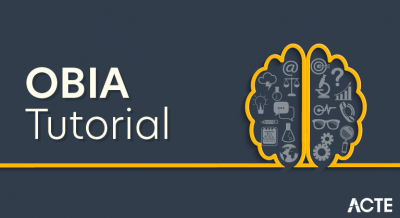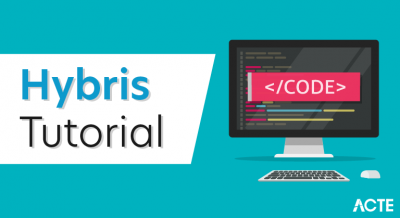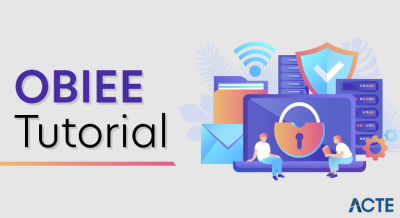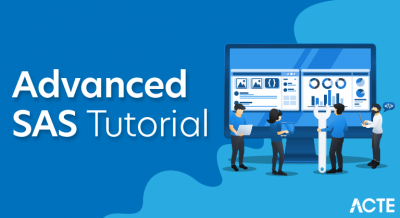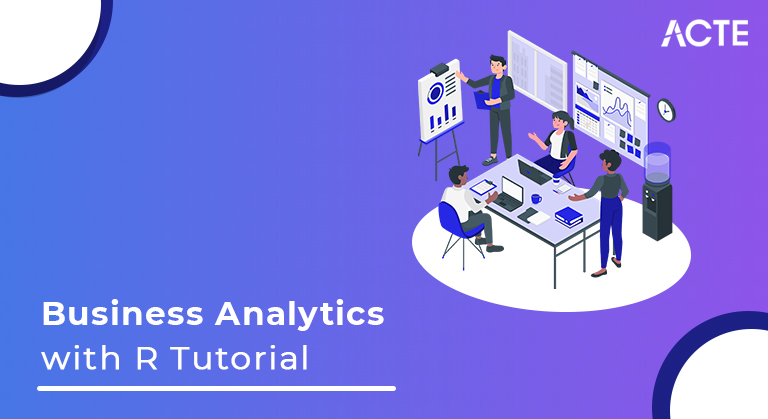
- Introduction
- About the Technology
- History
- Types
- Scope
- Features
- Advantages
- Certification
- Key components of a business analytics dashboard
- Differences and similarities between business intelligence and analytics
- Types of Business Analysis
- Tools and Techniques
- Business Analytics FAQs
- Conclusion
Introduction :-
Business Analytics With R or ordinarily known as ‘R Programming Language’ is an open-source programming language and a product climate planned by and for analysts. It is essentially utilized for factual calculations and top of the line designs. Accordingly, it is a well known language among mathematicians, analysts, information diggers, and furthermore researchers to do information investigation.
About the Technology :-
R is a GNU project, and is openly accessible under the GNU (General Public License), and R accompanies pre-gathered double forms for a very long time frameworks going from Unix and comparable frameworks (FreeBSD, Linux), Windows and furthermore MacOS. The initiation of ‘R programming Language’! R programming language was at first composed by Ross Ihaka and Robert Gentleman at the University of Auckland, New Zealand and presently it is created by the R Development Core Team. R is an execution of ‘S’ programming language which was created by John Chambers at Bell Labs.
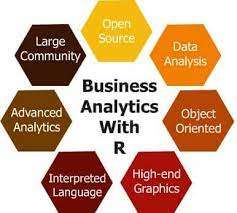
History :-
The name ‘R’ somewhat is gotten from the underlying names of its makers – Ross Ihaka and Robert Gentleman and somewhat it depends on the ‘S’ programming language. Additionally, an enormous gathering of people has added to ‘R’ by sending code and bug reports to its designers! R has a landing page: http://www.R-project.org/. What Does ‘R’ language do? ‘R’ is an absolutely programmable code that: Stores and handles information effectively involving a set-up of numeric and printed administrators for computations on exhibit and lattices. Comprises of apparatuses for information examination. Is furnished with graphical administrations to give reasonable and educational information investigation. Comprises of straightforward programming procedures with very much evolved capacities, circles, conditionals, input-yield offices. Comprises of LaTeX-like documentation design, which gives wide scope of documentation, both as printed copy and softcopy. This makes R effectively extensible through capacities and augmentations, permitting engineers to add to its current abilities.
- R is an open-source programming! Indeed, R is free! It is authorized under GPL (similarly as Linux) and you have all the opportunity to would whatever you like to do with R! You can be just about as innovative as could be expected and make fascinating adjustments with regards to it. R is open for incorporation into different frameworks as well. While dealing with R programming language, you can get to information whether it is on SAS, SPSS, SQL Server, Oracle or Excel and furthermore coordinate R in different applications and web-servers.
- R writing computer programs is intended for Data Analysis! R is essential an information investigation programming that comprises of tremendous assortment of calculations for information recovery, handling, examination and very good quality measurable illustrations. R has the underlying general factual strategies, for example, mean, middle, circulations, covariance, relapse, non-direct blended impacts, GLM, GAM and the rundown simply continue.
- The elements of R programming language can get to every one of the region of the investigation results and consolidate logical techniques to arrive at specific resolutions which are essential for the associations. For example, exact data on the quantity of individuals (and their experiences) utilizing a specific versatile handset can be extremely helpful to a portable organization in utilizing its business.
- R writing computer programs is Object-situated! Indeed, it’s valid! When contrasted with other factual dialects, R programming language has solid article situated programming offices. This is on the grounds that R has gotten from S programming language. However R is capable in growing completely object-situated projects, it’s way to deal with OOP depends on nonexclusive capacities rather than class progressive systems. R comprises of three OOP frameworks S3, S4 and R These elements depend on the ideas of classes and techniques. It will be unreasonable to contrast R and commonplace article situated dialects like Perl, Python, Ruby, etc.
Types :-
R is an extremely strong endeavor driven programming language which has the accompanying striking elements:
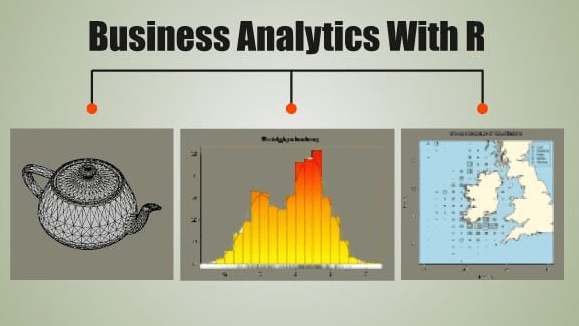
Scope :-
1. Data is estimated to increase 50-fold between 2010 and 2020, with companies accounting for the majority of growth. In addition, only 0.5% of the world’s data is analyzed, emphasizing the importance of technology and talent to extract the hidden value of all this data. 1. As a business manager, it is your responsibility to use data and leverage analytics to bring value to your organization. Even if you are not directly involved in data collection, reporting, or developing statistical models, you need to understand the processes and methods needed to guide others intelligently.
2. Business analysis includes the skills, practices, and technologies needed to investigate past business outcomes, generate insights, and serve as the basis for business planning. Business analysis allows you to use statistical techniques to gain new insights and a better understanding of business performance. This is in contrast to business intelligence. Business intelligence focuses on using a consistent set of metrics for both measuring past performance and guiding business planning, but it is also based on data and statistical techniques. Many years of work in the industry with R.
3. These notes are intended to provide both non-programmers and programmers with a working approach to learning R for use in business analysis. This memo uses the R programming language to access and organize data, perform analytics, create visualizations, automate business processes, reduce errors, and improve workplace efficiency. Great for accounting, business, and data science majors you want to understand. This text is based on a data science approach and is divided into five sections starting with an overview.
4. The introduction provides a history of R, a comparison with other languages such as Python, and a step-by-step guide for installing packages used in R, R Studio, and courses. If you are familiar with R, you can skip this section. The next section, “R Basics,” quickly launches and runs the reader in R by describing operators, functions, and data types. This section is essential for a general understanding of R and should be reviewed if you are relatively unfamiliar with programming languages.
5. If you have more than a basic knowledge of R, proceed to the next section, Data Collection. Data Acquisition is where Rubber meets R, and at least initially, where he spends most of his time in R, not only in this course, but also in the “real world.” The Data Collection section describes retrieving data from various sources such as Excel, .csv, SQL Server, and the Web. It then cleans up the retrieved data, identifies and processes outliers, and handles missing data and data manipulation.
6. Each area of work provides multiple approaches, along with an overview of the associated benefits and risks. Now that the data has been organized, we proceed to the analysis, but claim that the most important analysis was actually performed during the data acquisition phase, as data selection and cleansing cannot be performed without analytical considerations. Analysis includes script looping and debugging, visualization, classification, clustering, and prediction.
7. In this section, business analysts will begin to really understand the power of R in identifying and communicating business opportunities. This will take you to the last section of the course. By providing or communicating results, organizations can gain actionable insights that drive results. An important factor in communicating the insights gained is understanding the audience.
8. A presentation to a senior vice president is different from a presentation to a working team. You can better understand the difference in this section of the course. Next, we move on to various communication methods, including web portals such as RSshiny and dashboard development. As many companies use standard applications such as PowerBI, Tableau, and DOMO, we also provide a walkthrough on how to integrate R with these tools. After all, no application is used for business presentations other than PowerPoint, so we’ll also show you how to seamlessly output results in PowerPoint and share them using Outlook.
- Throughout the text, we will use general examples and the example of Acme Corporation, a fictitious conglomerate based in Fairfield, NJ. This conglomerate manufactures all kinds of conceivable products, no matter how elaborate and luxurious.
- However, most products do not work as intended or as expected (some products work very well, but they are counterproductive to users, often coyotes). While there are still many requests for Acme products, Acme’s delivery service is unique.
- Customers can get their products in seconds by simply ordering in their mailbox or on their website. The example is from finance, operations, marketing, and planning.
- A financial example shows extracting a company’s financial statements (income statement, balance sheet, etc.) from an internet source and comparing the companies to each other or one company in chronological order.
- Operational examples show the optimization of inventory and transportation using the provided datasets. The marketing example focuses on optimizing the market mix and supports operating models.
- The plan extracts various economic and trade data. In the Deployment section of this book, discussions and demonstrations provide a dashboard that connects all of the above analyzes.
- It also shows an example of output to PowerPoint and distribution via Outlook. 1.2 Preparation History of R R is an implementation of the S programming language combined with Scheme-inspired lexical scope semantics.
- S was developed by John Chambers of Nokia Bell Labs. Much of the code written for S runs unchanged, with some important differences. R was developed by Ross Ihaka and Robert Gentleman of the University of Auckland, New Zealand, and is currently being developed by the R Development Core Team, of which Chambers is a member.
- R is named after the first two R authors and is partly named as a play with S. The project was devised.
Features :-
Advantages :-
R Analytics (or R programming language) is free open source software used for all kinds of data science, statistics, and visualization projects. The R programming language is powerful and versatile, and integrates with BI platforms such as Sisense to help you get the most out of your business-critical data. These integrations include everything from statistical functions to predictive models such as: B. Linear regression. You can also use R to build and run statistical models with Sisense data and automatically update them as new information is fed into the model.
Certification :-
1. This language was specially developed for statistical analysis and data mining. R Analytics is used not only to analyze data, but also to create software and applications that can reliably perform statistical analysis. In addition to standard statistical tools, R includes a graphical interface. Therefore, it can be used in a wide range of analytical modeling, including traditional statistical tests, linear / non-online modeling, data clustering, and time series analysis. Statisticians love to use R. That’s because we create open charts and graphs, down to the correct math notations and formulas. Very popular for visualization of graphs, charts, images, various charts and more. BI analysts can use these types of visualizations to help them understand trends, outliers, and patterns in their data.
2. Another reason for the ‘s popularity is that command-line scripts allow users to gradually save complex analysis methods for later reuse with new data. Instead of reconfiguring the test, the user only has to get the test. This is also useful for verification and verification purposes. Researchers can examine and validate statistical models and identify potential errors in existing work. Known as a more complex language, it is one of the most popular languages for data analysis.
3. Get the most out of your data analytics with R R and its sister language, Python, are powerful tools for maximizing data reporting. Instead of using a programming language through another development tool such as RStudio or Jupyter Notebooks, integrate R directly into your analytics stack to predict key business outcomes and use useful statistics to interactive dashboards. You can easily build a statistical model by creating. The integration of R and Python allows you to perform advanced analysis faster, with accurate and up-to-date data. What can R Analytics be used for? Today, there are multiple ways to use R in different industries and domains.
4. A common use of R in business analysis is to create custom data acquisition, clustering, and analysis models. With R data analysis, you can build a statistical engine that can provide better and more relevant insights by more accurate data acquisition and storage, rather than choosing an off-the-shelf approach. More importantly, using R instead of boxed software allows enterprises to incorporate error-checking methods into their analytical models while easily reusing existing queries and ad hoc analytics.
5. To get the most out of your data, R and its sister language, Python, should be part of the analytics stack. These can be integrated to be as easy to use as SQL. In science and more research-oriented disciplines, R is an invaluable tool as these disciplines usually require very specific and unique modeling. This allows companies to quickly create custom analytics programs that integrate with existing statistical analytics while providing far deeper and more accurate results from an insight perspective.
6. There are no aspects of our lives that are unaffected by analysis. The huge wings of analysis determine how we buy toothpaste, how to choose a date partner, and how we live. Read on to learn what business analysis is. Moving on to the more technical definition of business analysis, Gartner states: “Business analysis includes solutions used to create scenarios, understand reality, and create analytical models and simulations for predicting future conditions. Business analysis includes data mining, predictive analysis, and application.
7. It includes analytics and statistics and is provided as an application suitable for business users. These analytical solutions often include packaged industry content targeted at the industry’s business processes (billing, underwriting, specific regulatory requirements, etc.). Business analytics are used interchangeably with data analytics. The only difference is that data analytics is the birth of the data boom, while business analytics is the era of putting data insights at the heart of business transactions.
8. Nearly 90% of small businesses and large enterprises have set up analytics capabilities over the last five years to stay relevant in the market and leverage the insights big data can provide in the digital age. Now that you know the definition of business analysis, let’s take a look at a broader understanding of the business analysis process. Meanwhile, professionals are rushing to the role of analytics for professional success.
9. This trend as new students take courses in business analytics and data science before entering the workforce and realize that experienced professionals can lose their jobs without having the skills needed for the digital economy. Is slowly changing. To migrate: Find opportunities to move within your organization – Medium to large organizations are building analytical skills and there are many opportunities for people to move. If you have experience with reporting, analytics, statistics, or advanced Excel, you may be willing to move leaders to more complex roles.
10. Initially, you may need to coordinate your normal work with new analytics initiatives, but this is one of the easiest ways to get started. Take an analysis course-Scientific learning in a structured format helps to expand more quickly. For analytics courses, you have a variety of options, from MOOCs, weekend programs, hybrid courses (classroom + online) to full-time programs.
11. While traditional full-time programs tend to give the best results, hybrid courses and MOOCs are better suited to the learning needs of working professionals. Gain hands-on experience – Simply stating that you know a certificate or analysis tools and techniques on your resume will not help you pass the interview. All you need is a resume-ready project to make an impression. You can switch with confidence by participating in online hackathons, participating in free projects using public data, and solving analytical challenges with Kaggle and Analytics Vidhya.
Key components of a business analytics dashboard :-
Let’s take a look at them. Data Aggregation: Data must be collected, organized, and filtered using transaction records before starting the analysis process. Data mining: The process of data mining is the sorting of large datasets using statistics and machine learning. This will help you find trends and build relationships Association and Sequence Identification: Next, you need to identify actions that are related to other actions or that are performed in a particular order.
Text Mining: This allows you to inspect large unstructured text datasets. This is done for qualitative and quantitative analysis of the data.
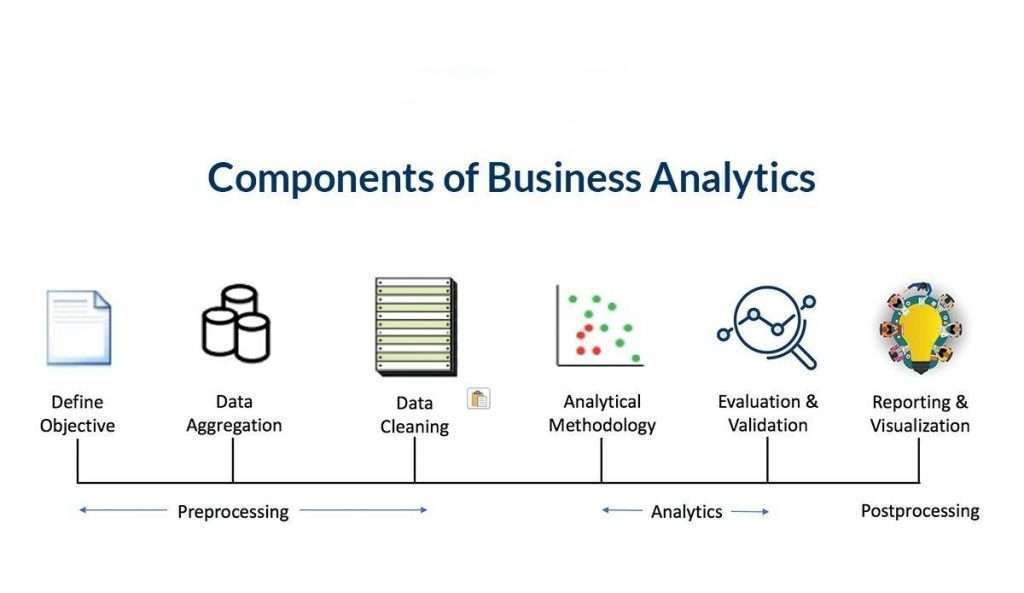
Forecasting: Forecasting is performed to analyze historical data. This data can be obtained from a specific time period. It allows us to make informed estimates and determine future actions. Predictive analytics.This allows you to create predictive models using a variety of statistical tools and techniques. This model extracts information from different datasets and provides information about patterns.
Optimization: After all trends have been identified and all forecasts have been made, the enterprise needs to apply simulation techniques that can test the best scenarios.
Data visualization: Provides a visual representation in the form of charts or graphs. This guarantees fast data analysis The difference between business analytics and business intelligence Another million dollar question is the difference between business analytics and business intelligence, as BI is often used instead of BA. However, there are only minor differences in the definition of these terms in the industry.
BI aims to create dashboards, reports, and documents using data collected over time from various sources. BA focuses on transforming data insights into actionable steps. Therefore, BI has a long loop with BA functions built into almost every step. Like Dr. Bappaditya (Course Instructor-PGPBABI, The Great Lakes) emphasizes: “I think business analysis (BA) and business intelligence (BI) are very overlapping, so there isn’t much difference. Business intelligence is a bit more general and we analyze using data from different sources. This is also part of the BA, but BI is finally complete with the insights generated from the data.
Therefore, in that sense, BI is a bit more comprehensive. Regardless of the nomenclature (BI or BA), we are actually trying to understand how to collect data, clean up data, and communicate data with each other. Examine unstructured anomalous data, perform predictive analytics to uncover insights, and ultimately act on them. In other words, both BA and BI cover the same thing. Whether you take a Business Intelligence course or a Business Analysis course, the course work listed under both programs (BA or BI) is pretty much the same, so I don’t think there’s a big difference. Let’s take a look at .
- Business Intelligence Business Analysis BI aims to create dashboards, reports, and documents using data collected over time from various sources.
- BA focuses on transforming data insights into actionable steps. Business Intelligence Focuses on Descriptive Analysis, Business Analysis Focuses on Predictive Analytics
- Both BI and BA focus on presenting and organizing data for visualization.
Differences and similarities between business intelligence and analytics:-
- Descriptive analysis
- Diagnostic analysis
- Predictive analytics
- Prescriptive analytics
Types of Business Analysis :-
1. Descriptive analysis Summarize your organization’s existing data to understand what has happened in the past or what is happening now. Descriptive analysis is the simplest form of analysis because it uses data aggregation and mining techniques. This makes data accessible to members of organizations such as investors, shareholders, marketing executives, and sales executives. Helps identify strengths and weaknesses and provides insights into customer behavior. This helps shape strategies that can be developed in the area of targeted marketing.
2. Diagnostic analysis This type of analysis helps shift focus from past performance to current events and determine which factors are driving the trend. Use techniques such as data detection, data mining, and drilldown to uncover the root cause of the event. Diagnostic analysis uses probabilities and probabilities to understand why an event occurs. Techniques such as sensitivity analysis and training algorithms are used for classification and regression.
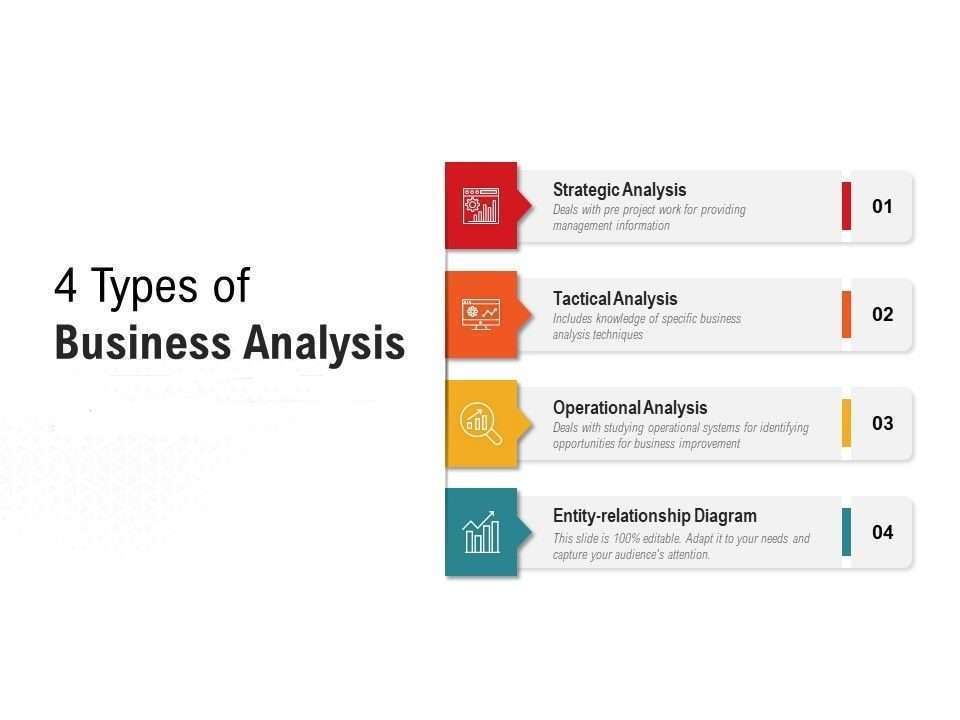
3 Predictive analytics This type of analysis is used to predict the likelihood of future events using statistical models and ML techniques. Develop a model for estimating the probability of an item based on the results of descriptive analysis. Machine learning professionals are used to perform predictive analytics. You can achieve higher accuracy than with business intelligence alone. One of the most popular applications is sentiment analysis. Existing data from social media is collected and used to provide a comprehensive picture of the user’s opinion. This data is analyzed to predict their emotions (positive, neutral, or negative).
4.Prescriptive analytics It goes beyond predictive analytics and provides recommendations for suboptimal course of action. It suggests all favorable outcomes according to a particular course of action and recommends specific actions necessary to achieve the desired outcomes. It relies mainly on two things: a powerful feedback system and constant iterative analysis.Learn the relationship between actions and their consequences. A common use for this type of analysis is to create a recommender system.
- Tableau, a data visualization tool, also has drag-and-drop elements that make it easy to get started. That’s why business analytics has found such ubiquitous applications in all areas, and experts in very different industries such as BFSI, marketing, agriculture, healthcare, and genomics make it an excellent career option. Seems to be a natural advancement in the career.
- However, you need to have a good knowledge of statistics. Business analysis requires advanced mathematics – business analysis is based on the use of common human intelligence that can be used to solve industry problems. Therefore, you do not need a Fourier series or advanced mathematical algorithms to create an analytical model.
- Mathematics learned up to level 10 + 2 is good enough to serve as a starting point for professionals in all disciplines. Also, many professionals unknowingly apply math to their daily work using Excel and data interpretation, so math beyond the basic level does not require learning the principles of business analysis.
- Learning BA tools and techniques is enough to be a good business analyst. You can get a job interview by learning Python, R, or SAS, but without domain knowledge and domain knowledge, it’s quite difficult for anyone to excel in their role. The second is business insight. Understanding the needs of your customers (or your own internal needs) and creating problem statements that need to be addressed is a busy task for business analysis professionals.
- Simply put, learning tools and techniques are just one part of the big picture for you to start your role. dr Bappaditya, Director of the Great Lakes PG Program Business Analysis Program, illustrates this with an example. “One million records of credit card customers are processed to distinguish between bad and good customers.
- While data scientists process this data to generate insights, business analytics experts do so. Create a data decision rule. A business analyst examines all this data and if the credit score is above (eg 95%) or the income is above (eg 95%), the customer Good and the number is that of dependents. Otherwise, a customer is bad. So, Business Analytics is much more applied and with a very specific objective in mind.
- Business analytics is not about accuracy. It is about what can be implemented or what can be useful to the client. So business analytics often compromise on the accuracy a lit bit as long as the model gives insights that can be acted upon. Therefore, business analysis requires a lot of input and intuition to understand what the result is.
- Business analysis profiles are all about number calculations (number calculations or technically speaking). Cleaning data, chopping and chopping data, and converting unstructured datasets to structured datasets are all part of the process. However, the profile of a business analysis expert is not limited by these features. The essence of true business analytics is to solve business problems by combining domain knowledge, customer interaction, business insights, and basic human intelligence. Business analysis tool Business analysis tools help analysts perform immediate tasks and generate reports that are easy for the layperson to understand. These tools are available from open source platforms and give business analysts comprehensive control over their insights.
- They are usually flexible and user-friendly. Applying to the role of business analysis requires a variety of business analysis tools and techniques, including Python, R, SAS, Tableau, statistical concepts, and building analytical models. Practical knowledge of business analytics and business intelligence tools is an important differentiator for professionals applying for business analytics jobs.
- The relevance of a data analysis tool depends on the project and customer requirements. Python, R, SAS, Excel, and Tableau all have their own place for usage. According to the 2018 Great Learning Skills Report, SQL is the number one requirement for good data science, followed by Python and Java. According to data from Inside.com, Hadoop, R, and SAS have climbed the ladder and are in the top 10 skills required.
- Let’s take a closer look at some of these business analysis tools Python SAS R panel Python – Python has a very regular syntax due to its generic nature. The learning curve is relatively gentle and low due to the emphasis on simplicity and readability. Python is extremely flexible and can be used in web scripts. This is primarily applicable when the analyzed data needs to be integrated into a web application, or when statistics are used in database creation.
- The IPython Notebook makes it easy to work with Python and your data. You can share your notebook with others, but you don’t necessarily have to tell them to install anything. This reduces the organization of your code and allows you to focus on other useful tasks. Python provides several libraries for visualization such as Boken, Pygal, and Seaborn, but these too are too many to choose from. Also, unlike R, its visualization is complex and unattractive to look at.
Tools and Techniques :-
Business Analytics FAQs :-
1. What is enterprise analytics in easy words? In easy words, enterprise analytics is a manner thru which organizations employ diverse technology and statistical techniques to investigate information to assist in gaining new insights which can in addition assist in selection-making.
2. What do enterprise analytics do? Business Analytics have severa responsibilities. They paintings on making use of statistical information, huge information, and information visualization to useful resource in enterprise selection and imposing organizational changes. They additionally assist in predicting consequences primarily based totally on insights and taking knowledgeable decisions.
3. primary kinds of enterprise analytics are: Descriptive Analytics Predictive Analytics Prescriptive Analytics
4. What are examples of enterprise analytics? Business Analytics is utilized in nearly each enterprise today. Some of the real-global examples of enterprise analytics are growing advertising strategies, growing sales, enhancing economic efficiency, streamlining processes, growing productivity, and the usage of predictive analytics.
5. Is enterprise analytics a very good profession? Yes, enterprise analytics is a superb profession. Organizations rely on Business Analysts to offer treasured insights that may be useful in selection making. Business analytics specialists are required in all industries, be it economic establishments or e-trade sites. Upskilling withinside the area of enterprise analytics assist you to energy beforehand your profession.
6. How hard is enterprise analytics? The gaining knowledge of consequences may also range from one character to another. Some may also locate enterprise analytics hard and a few is probably capable of draw close the ideas easily. However, deciding on the proper layout of gaining knowledge of (on-line guides, video tutorials, books, etc.), will assist make it easier. Choosing the proper on-line guides which mentor steerage will really assist make the manner easier.
7. Is enterprise analyst an IT task? A aggregate of technical competencies along with statistical evaluation software`s, SQL and database question languages, information mining, information visualization, enterprise intelligence, and tender competencies are required for a enterprise analyst. IT Business Analyst is one of the profession paths you may absorb as a enterprise analyst.
8. Does enterprise analytics require coding? Business Analytics is extra records oriented. However, a number of those equipment may also consist of SQL, Python, and for this reason having a few coding and programming know-how is required. Depending at the corporation and your task description, the necessities may also range.
9. What competencies are wanted for enterprise analyst? Some of the competencies wanted for enterprise analysts are: Analytical and hassle solving Oral and written communique proficiency Basic programing language know-how Business shape understanding Cost-Benefit Analysis Statistical evaluation software (e.g. R, SAS, SPSS, or STATA)
10. How do I begin a profession in enterprise analytics? There isn’t anyt any constant technique to begin a profession in enterprise analytics. However, taking over the PGP Data Science and Business Analytics Course through Great Learning may be a exquisite begin.
Conclusion :-
The path presented on-line training and mentored gaining knowledge of sessions. You can have the possibility to research from the first-rate withinside the enterprise and paintings on numerous real-global tasks in order to assist in gaining a hands-on gaining knowledge of experience. Great Learning additionally gives profession help and has get entry to to a number of the pinnacle hiring companions withinside the country. Comment at the weblog beneath in case you want in addition assist identifying those steps and we are able to make certain to assist you.


